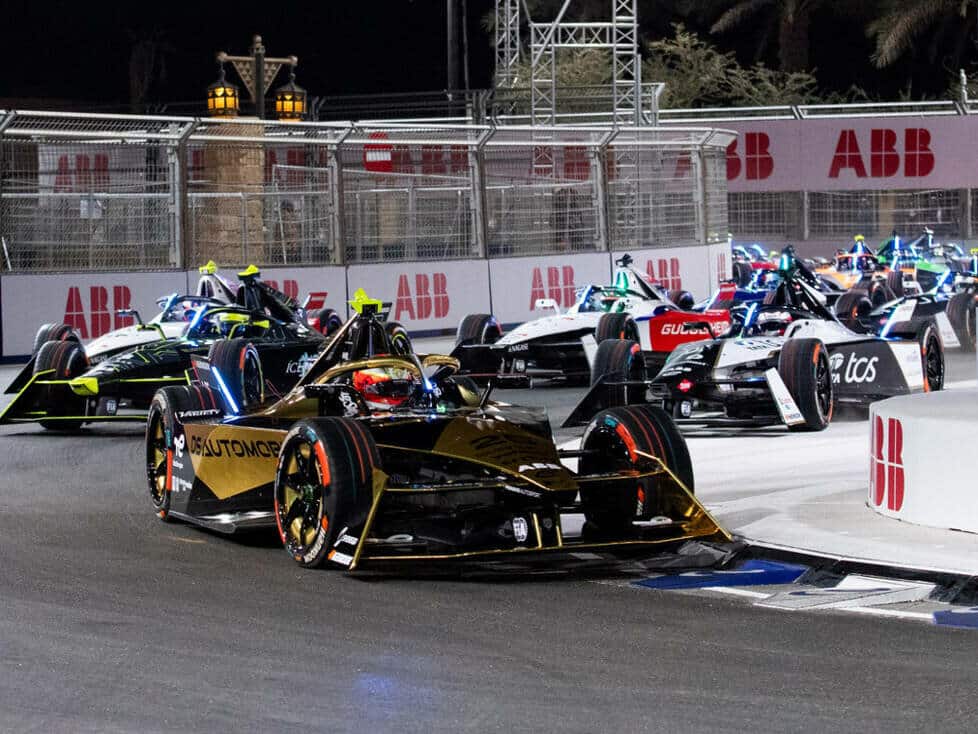Jean-Eric Vergne with pole and an excellent second place in the first of the two races of the Diriyya E-Prix in Saudi Arabia
An atmosphere worthy of a fantastic movie, an impressive drone show and a wonderful night race: these were the ingredients that made the first of the weekend’s two Formula E races at the Diriyya E-Prix near Riyadh in Saudi Arabia a success.
In the first free practice session on Thursday, Jean-Eric Vergne and Stoffel Vandoorne finished second and third in the two DS E-TENSE FE23s from DS-Penske.
On Friday – after another practice session dedicated to setting up the electric cars – Vergne set the fastest time in his qualifying group. Vandoorne was less fortunate, getting stuck in traffic on his fast lap and failing to qualify for the quarter-finals.
Vergne, on the other hand, drove a perfect qualifying session to beat Norman Nato (Andretti) in the quarter-finals and Sergio Sette Camara (ERT) in the semi-finals. “You’ve just won your ticket for the final,” deputy DS Penske team boss Nicolas Mauduit told him over the radio.
A few seconds later, when Mitch Evans was considered the 73 percent favorite for pole, Vergne proved unstoppable and set another best time like a metronome. The result was the 16th Formula E pole for the Frenchman, who now holds the record for the most poles in the history of the electric racing series together with Sebastien Buemi (Envision).
A lively but controlled race
In the race under floodlights, Vergne got off to a perfect start and kept the lead ahead of Mitch Evans, who was certainly a threat in his Jaguar. Vergne was one of the first to activate attack mode in order to set a faster pace and gain a slight advantage.
Defending champion Jake Dennis temporarily took the lead. Behind the Andretti driver, meanwhile, the battle between DS-Penske and Jaguar continued. Dennis, Evans and Vergne soon pulled away from the rest of the field, with the difference in performance between the leading group and the chasing pack being quite significant
In order not to use too much battery power, Vergne activated his second attack mode and lost two positions. He stayed in contact with the Jaguar and Andretti cars, although the energy strategies were different.
In the slipstream of Dennis, Vergne was often put under pressure by Evans. The DS Penske driver fought back to the best of his ability, but just before the halfway point of the race it became clear that it would be tight with the remaining energy.
Evans tried to take the lead, but was a little too optimistic and went off the racing line. Dennis, who did not defend aggressively, stuck to his strategy and retained the lead. Behind him, Vergne tried to attack Evans. The two cars touched, but the Frenchman got away. After expending a lot of energy, Evans was eventually overtaken by his Jaguar team-mate Nick Cassidy
“Very important” second place for DS-Penske
On the 30th of 37 laps, Dennis and Vergne were still in front, separated by just over two seconds. Behind them, the Jaguar strategy paid off and in the final laps Vergne had to call on all his experience to defend his position. He managed it and crossed the finish line just behind winner Jake Dennis in second place.
“When you start from pole, you obviously want to win,” said Vergne shortly after crossing the finish line. “But if you look at the course of the race, which could have seen us much further back in the final result, you have to be satisfied.”
“This second place is very important for us, because it shows the progress we have made since last year. The result makes it clear that we are now more capable of fighting with the Jaguar and Porsche cars,” said Vergne.
On Saturday, the drivers will line up on the grid at the same time for the second race of the Saudi Arabia weekend. There will be one less lap on the program (36 compared to Friday’s 37), but with the same amount of available energy. The strategies – and the pace – could therefore be slightly different





